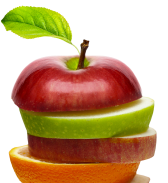Table Of Contents
Have you tried dozens of fad diets, meal plans, and “quick fixes” promised by the internet, but nothing seemed to work? It’s time to say goodbye to restrictive crash diets that destroy your health and embrace a new approach to wellness – circadian fasting.
This approach taps into the rhythms of your body and helps you align with your internal clock, nourishing your body naturally and intuitively.
Picture this: no more deprivation, strict rules, and unsustainable restrictions; only you, in synch with your body and the world around you, shedding pounds and feeling better just by scheduling your meals within natural daylight hours.
Is circadian fasting just another passing trend, or is it a pathway to wellness and healthy weight loss? Let’s explore.
Also, read – Dare to Transform: 75 Soft Challenge When 75 Hard is Too Much
What is Circadian Rhythm Fasting?
Circadian fasting is a sort of intermittent fasting that replicates the biological mechanism of our circadian rhythm, which regulates daily body rhythms such as the sleep-wake cycle.
This type of fasting is also known as the “sun cycle diet” or an early time-restricted feeding (eTRF) – it encourages you to eat your meals when the sun rises and sets and avoid eating and drinking when it’s dark. The key is to align your eating with your circadian rhythm, depending on when you usually wake up and sleep.
Why prioritize morning meals? It’s all about capitalizing on the body’s natural hormonal fluctuations. Cortisol, a stress hormone, rises in the morning, so your metabolism is also peaking at that time. It means that all the food you eat will be used as energy.
In the evening, your cortisol levels drop, slowing your metabolism, so there’s a higher chance that your food will be stored as fat since your body doesn’t need so much energy in the evening.
Does this mean your circadian rhythm eating window will change throughout the year with daylight fluctuations? It depends!
While some researchers believe that the hours of eating can vary, depending on the time of year, from six to twelve hours per day, others stick to the same 8- to 12-hour eating window all year. The choice is yours.

How To Prepare for Circadian TRF Fasting
Are you sold on circadian fasting and ready to jump on this bandwagon? While it may seem obvious and easy, the effectiveness of your fasting relies on how well you prepare for it.
During intermittent fasting, you could eat and fast whenever you wanted to, with dozens of approaches and meal plans. That’s not the case with the circadian rhythm diet. This time, it’s up to the sun to decide when you eat.
Here’s how to align with the sun and prepare for a fast:
Set Realistic Goals
What’s your motivation for starting a circadian fast? Do you want to improve your metabolism, fix your eating schedule, or shed stubborn pounds? Set a goal and remember that every sunrise brings you closer to it.
Adjust Your Eating Window
You’re probably eating outside of your body’s natural daylight hours now, and that’s okay. Shift your circadian rhythm eating times gradually, eating your first meal early in the morning and closing the window with sunset.
Consume Nutrient-Dense Foods
Since you’ll have a limited window for eating, it’s crucial for your meals to be as nutritious as possible to fuel your body. Consume lean protein, healthy fats, fresh fruit, and veggies, and don’t forget about complex carbs! There’s no need to restrict anything – even snacks can be enjoyed in moderation.
Also, read – Fair Overview 2024 of What Is Dr Now’s Diet and How It Can Help You Lose Weight
Stay Hydrated
H2O should become your best buddy during this period! Hydrate to the max, drinking at least 2 liters of water a day, supporting your body’s natural detoxification process and keeping you healthy and energized.
Listen to Your Body
This circadian rhythm TRF journey is uniquely yours. Listen to your body’s cues and bend the fasting rules if needed. Your body knows best, so listen to it and stay flexible.
Building Your Circadian Fasting Schedule
Are you used to waking up at different times every day, skipping breakfast when you’re in a rush, and enjoying dinners after 9 PM? If your eating schedule is hectic and you rely on circumstances rather than your hunger levels, it may be challenging to adjust to circadian fasting at first.
But every fitness enthusiast starts out as a newbie, and you’ll get there too. Let’s build a basic outline of your eating schedule to make this journey smoother.
Morning (6-10 AM)
Get up and shine with the sun’s first rays and enjoy a filling breakfast. Early morning is the perfect time for a balanced meal to fuel your body and give you the energy to make your day.
Daytime (10 AM – 6 PM)
Listen to your hunger levels and eat lunch and dinner during the daylight hours. Circadian dinner time is usually just before sunset. Remember to drink plenty of water, enjoy a healthy and delicious snack, and ensure you’re satiated and comfortably full.
Evening (6-8 PM)
Now that your cortisol levels begin to decline and your metabolism slows, gradually transition into your fasting period. During these hours, limit your food intake and drink less water. Your body will slowly enter a fasting state and rest.
Overnight (8 PM – 6 AM)
Snacking at night might be fun, but avoid doing it during a circadian fast. The night should be dedicated to sleep and restoration, metabolic regeneration, and cellular repair. Get your eight sweet hours of sleep and get ready for another tasty breakfast in the morning.
Circadian Rhythm Fasting Benefits
Fasting in itself offers mindblowing benefits for your health and well-being, but what about circadian rhythm fasting? Aligning to your natural clock and eating during the daylight hours is the hack for boosting your metabolism, lowering the “bad” cholesterol, and melting away those stubborn pounds.
Here are eating two meals a day benefits and why circadian fasting is your secret weapon:
Boosted Metabolism
A turbocharged metabolism is no fairytale with circadian fasting. Research suggests that TRF increases metabolic rate and reduces glucose production. Sticking to circadian fasting is the way to go if you’ve been struggling with a slow or sluggish metabolism.
Reduced Risk of Diabetes and Heart Disease
Circadian fasting is not only about losing weight – this type of fasting is your body’s guard against diseases like diabetes and heart disease. By lowering your cholesterol and glucose levels, TRF stops the risk of health issues in the future.
Improved Immune Function
Multiple studies have shown that circadian rhythm fasting has an incredible anti-inflammatory effect on your body. It suppresses pro-inflammatory cytokines, suppressing chronic inflammation and improving your immune system function. Forget about sneezing and catching a cold every winter!
No More Tummy Problems
Surprisingly, your circadian rhythm food schedule influences how your gastrointestinal system works! Circadian fasting breaks your digestive system and eliminates bloating, indigestion, and other tummy issues.
Graceful Aging
Taking care of your circadian rhythm and maintaining a regular eating pattern will promote cellular repair and regeneration. You’ll age in a healthy, graceful way, possessing high energy levels and vitality throughout your life.
Sound Sleep
Are you drained by restless sleeping, nightmares, and tossing and turning in bed for hours? Say goodbye to all those issues and welcome sweet dreams brought by circadian fasting. This eating pattern promotes a high-quality, healthy sleep, helping you rest and wake up ready to conquer the day every morning.
Circadian Rhythm and Intermittent Fasting: Are They Any Different?
Everyone is raving about fasting these days; some are doing the 16/8 fasting, others jump on the circadian fasting bandwagon, but how do you tell the difference and choose your perfect match? Let’s compare intermittent fasting and circadian fasting to make your choice easier. Aspect Circadian Rhythm Fasting Intermittent Fasting Eating Schedule Eat and drink only during the daylight hours, aligning the schedule with your body’s natural clock. Depending on the pattern, cycle between eating and fasting with set time intervals: 16/8, 18/6, 20/4, or full days of fasting. Benefits Boosted metabolism, healthy aging, lower cholesterol levels, improved sleep, reduced risk of chronic diseases, and weight loss. Weight loss, increased energy levels, improved insulin resistance. Fast Length From sunset till sunrise, usually the evening and nighttime. Depending on your fasting pattern, from 6 to 24 hours and even whole days of fasting. Flexibility It is less flexible since the fast is based on daylight hours, not your individual preferences. IF is based on your preferences, you can mix your periods of eating.
Wrapping Up – Circadian Rhythm Fasting Weight Loss Results
Think of the circadian fasting journey as a marathon, not a sprint; it’s a gradual, steady path toward a healthier and more mindful you. The change won’t occur overnight, but one day, you’ll see a remarkable new reflection back in the mirror and thank yourself for embarking on this journey.
Take a moment to celebrate a circadian rhythm fasting before and after:
Before: Weight fluctuations, low energy levels, constant cravings, and a slow metabolism. You may have been looking for a solution for quite some time, and it started to seem that you’re stuck and the solution is out of reach.
After: Who is this strong, healthy, and dedicated person you see in the mirror? You’ve boosted your energy levels, shed stubborn pounds, and regained a sense of confidence and power. Your dedication is your superpower; you’re capable of mind-blowing transformations with enough effort.
Remember to listen to your body, be patient, and trust the sun when building your eating schedule. You’ve got this!
William is from Canada, he is passionate nutrition & wellness writer. William understands that the topic of wellness is still not well understood, so his goal is to enlighten and teach people how to live healthier and happier in their bodies.










I quite like reading an article that can make people think.
Also, thank you for allowing for me to comment!
I’m so thankful for this insightful explanation of circadian rhythm fasting. This article has definitely given me more to think about and consider when exploring fasting options.I’ll be trying this out and sharing it with others.
Hi, Oscar!
Thank you!